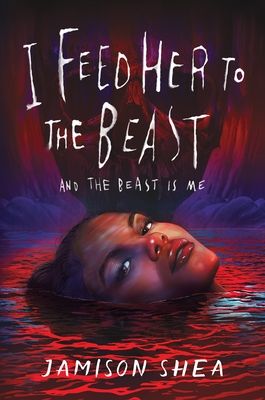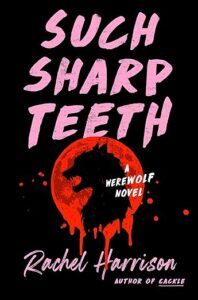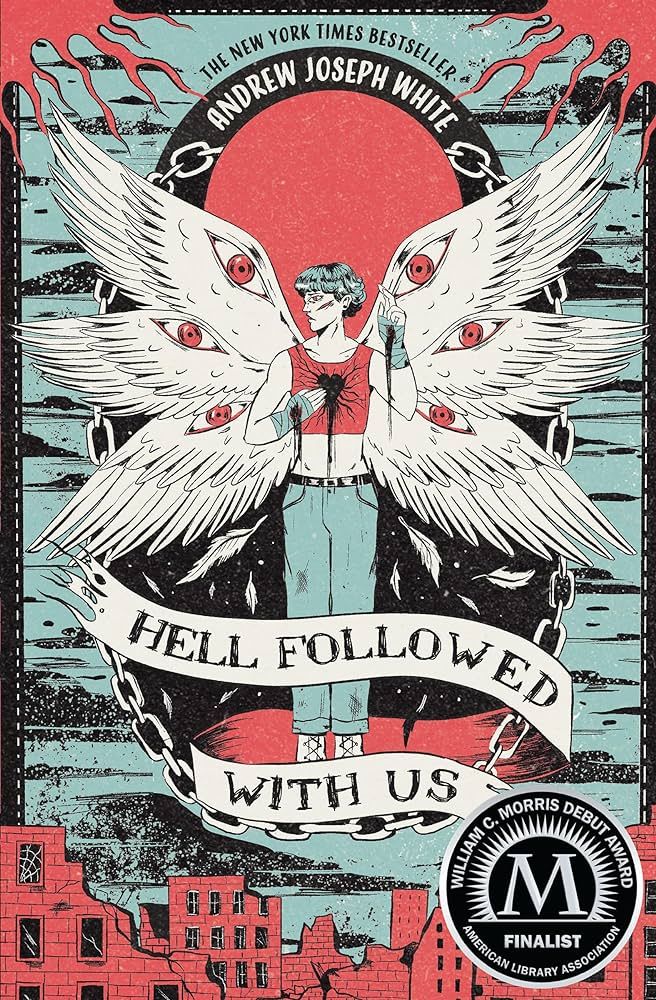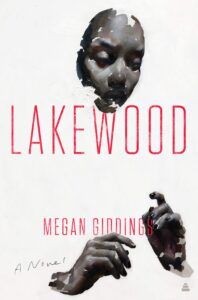The Rise of Body Horror Novels
Horror is a genre that contains multitudes. We have old-fashioned Gothic horror, such as Dracula, featuring ancient, crumbling houses, supernatural creatures, and the young women whose innocence those creatures threaten. There’s suburban horror, like The Stepford Wives, where the evil of a seemingly perfect, innocuous society is slowly revealed. Slasher horror is most often associated with films, but many novels have taken a stab at this subgenre, such as Clown in a Cornfield or You’re Not Supposed to Die Tonight. Horror stories invite us to take a look at our own fears, both overt and subconscious — and sometimes ask us to consider the preconceptions that lead to us having those fears in the first place.
Body horror is a subgenre that particularly lends itself to this examination of what and why we fear. In body horror stories, the horror plays out on the physical forms of the characters, often through terrifying and painful transformations — for famous film examples, think of The Thing or practically anything by David Cronenberg. It’s unsurprising that body horror has been such an enduring subgenre: our bodies are the way we interact with the world and society, and — as anyone who experiences any body-centred marginalisations knows — can become a site of distress, pain, or violence.
Body horror stories are a rising tide in the horror and wider speculative fiction genre, and the reasons behind their increasing popularity are as chilling as the stories themselves.
Teen and YA Body Horror
It’s not surprising that body horror is a common theme in books aimed at or starring teens. Puberty can be a kind of body horror in and of itself, with sudden changes in form, hair growth, bleeding, and unexpected pain that can range from uncomfortable to excruciating. The body changes that are part of puberty can be distressing for teens, both cis and trans, and have become a core part of teen and YA body horror.
Stories about monster girls have been used as ways to explore cis teen girls dealing with changes like starting menstruation, and challenging sexist stereotypes that view pubescent girls as equal parts desirable and monstrous because of the body changes that come with sexual maturity. This isn’t exclusive to YA: Lucy in Dracula is condemned to die as a vampire, with the subtext that this has happened because of her beauty and how attractive she is to the men around her.
However, it isn’t only puberty that provides a foundation for body horror featuring teenage girls. Struggling against a world that wants to keep them down takes a toll on the body, particularly that of girls with multiple marginalisations. In the ballet-centred body horror I Feed Her to the Beast and the Beast is Me, Laure is a working-class bisexual Black girl who has, through grit and determination, fought for her place in the Paris Ballet — only to find that, no matter how hard she works, she will never be good enough for this upper-class, very white world. Laure makes a deal with a demonic river of blood, putting her body on the line even more than she already has while training as a dancer, and the more she flexes her newfound power, the more her body transforms.
In the aftermath of abortion rights being overturned in the US, it’s likely that we will see many more pregnancy-based body horror stories in the years to come.
Pregnancy and Body Horror
Puberty has prompted many body horror stories, but so has pregnancy. Again, this is hardly a surprise: even the most straightforward pregnancy involves extreme body changes, including organs shifting into completely different places. The changes involved in pregnancy are so major that it’s unsurprising that many authors have drawn parallels with more supernatural forms of transformation. For example, in Such Sharp Teeth, the story focuses around a pair of twins — one of whom is pregnant, while the other has recently been bitten by a werewolf. Rory has to negotiate hair sprouting, bones cracking, and sudden moments of violent rage, while her sister Scarlett deals with pre-labour pains and sickness. Both women find common ground in realising how drastically their lives are going to change when the processes they are undergoing have reached their conclusion.
Pregnancy isn’t always contrasted with supernatural body horror — sometimes, the horror is explored through the pregnancy itself. Rosemary’s Baby is chilling not only because of the demonic side of Rosemary’s pregnancy but because her symptoms are, in many ways, a “normal” manifestation of a difficult pregnancy, including feeling too sick to eat for months on end and having bizarre cravings. The changes Rosemary goes through are rendered even more horrifying by the gaslighting she receives from her husband and his devil-worshipping allies, who insist that everything is fine — a minimising of her symptoms that many people who have been through tough pregnancies will recognise. Rosemary’s Baby was published six years before Roe v. Wade passed. In the aftermath of abortion rights being overturned in the US, it’s likely that we will see many more pregnancy-based body horror stories in the years to come.
Body horror stories strike at the heart of one of our greatest fears: that our bodily autonomy will be taken from us, and we will be changed in a way that we didn’t consent to, to the point where we no longer recognise ourselves. Unfortunately, this has been reality for many people throughout the years…
Body Horror and Power Imbalances
Pregnancy is not the only bodily autonomy-related issue that body horror has been used to explore. One of the reasons that women, people of colour, disabled people, and LGBTQ+ people of all genders are the authors of a recent wave of body horror novels is because, legally and socially, marginalised bodies are regulated, scrutinised, and portrayed as monstrous by mainstream society.
In her YA novel You Could Be So Pretty, Holly Bourne describes existing beauty treatments in a way that emphasises the toll they take on women and girls’ bodies — her characters engage in hair stripping, apply Mask in order to leave the house, and, in one chilling sequence, the mother of one of the protagonists nearly dies in hospital while receiving invasive Empowerment procedures that are implied to be extensive cosmetic surgery. While these treatments are portrayed as optional, a matter of personal choice, the women and girls who eschew them are deemed objectionable and monstrous. By writing existing beauty treatments through the lens of body horror, Bourne invites us to question the reasons why these procedures have been normalised, and why women in the public eye are still criticised for visibly aging or dressing down.
Many marginalised writers have turned the horror dynamic of body horror on its head, having their protagonists become monstrous as a way of reclaiming their power. In Sorrowland by Rivers Solomon, and Hell Followed With Us by Andrew Joseph White, the protagonists both end the novel having transformed into creatures that are both terrifying and powerful. Benji of Hell Followed With Us is a trans boy, and Vern of Sorrowland is intersex and begins the novel pregnant; both protagonists have escaped from fundamentalist religious communities that did not accept their identities, and which sought to control their bodies. By embracing the body horror-inspired transformation that they experience over the course of their stories, both Benji and Vern gain the strength and power they need to break free from the oppressive groups that sought to use them and take control of their own lives. Solomon and White are both trans authors, and it is significant that both novels were written against a backdrop of a rise in anti-trans legislation in the UK and the US. The description of White’s debut novel explicitly says it is about “embracing the monster within and unleashing its power against your oppressors.”
Body horror has also been used to skewer the horrifying medical experimentation that many marginalised people, particularly Black Americans, have been subjected to over the years. The horror novel Lakewood was partly inspired by the Tuskegee Syphilis Study, where a group of Black men were subjected to medicalised torture over a period of several decades. These men were not told that they had syphilis, and were lied to about the treatment they were receiving, which was placebo-based; this continued long after the discovery of penicillin, which would have cured their illness. Instead of being treated, these men were left to suffer the effects of long-term syphilis. Lakewood tells a modern-day story of a Tuskegee-like experiment, where a young Black woman joins a hush-hush medical study in the hope of clearing her family’s debt and soon realises that she has not been told the full extent of what the treatment will involve.
Body horror stories strike at the heart of one of our greatest fears: that our bodily autonomy will be taken from us, and we will be changed in a way that we didn’t consent to, to the point where we no longer recognise ourselves. Unfortunately, this has been reality for many people throughout the years, and the (however slowly) increasing ability of marginalised people to access publishing and tell their stories is one reason why we are seeing more body horror stories hitting the shelves in recent years. With the increase in repressive laws and rulings that restrict people’s bodily autonomy even further, we can expect the rise of body horror to continue — unless society undergoes its own drastic transformation.
If you want to explore the world of body horror, try our list of 13 Skin-Crawling Body Horror Books. For a feminist take on the body horror subgenre, have a look at 9 Body Horror Novels by Women About Losing Control.







